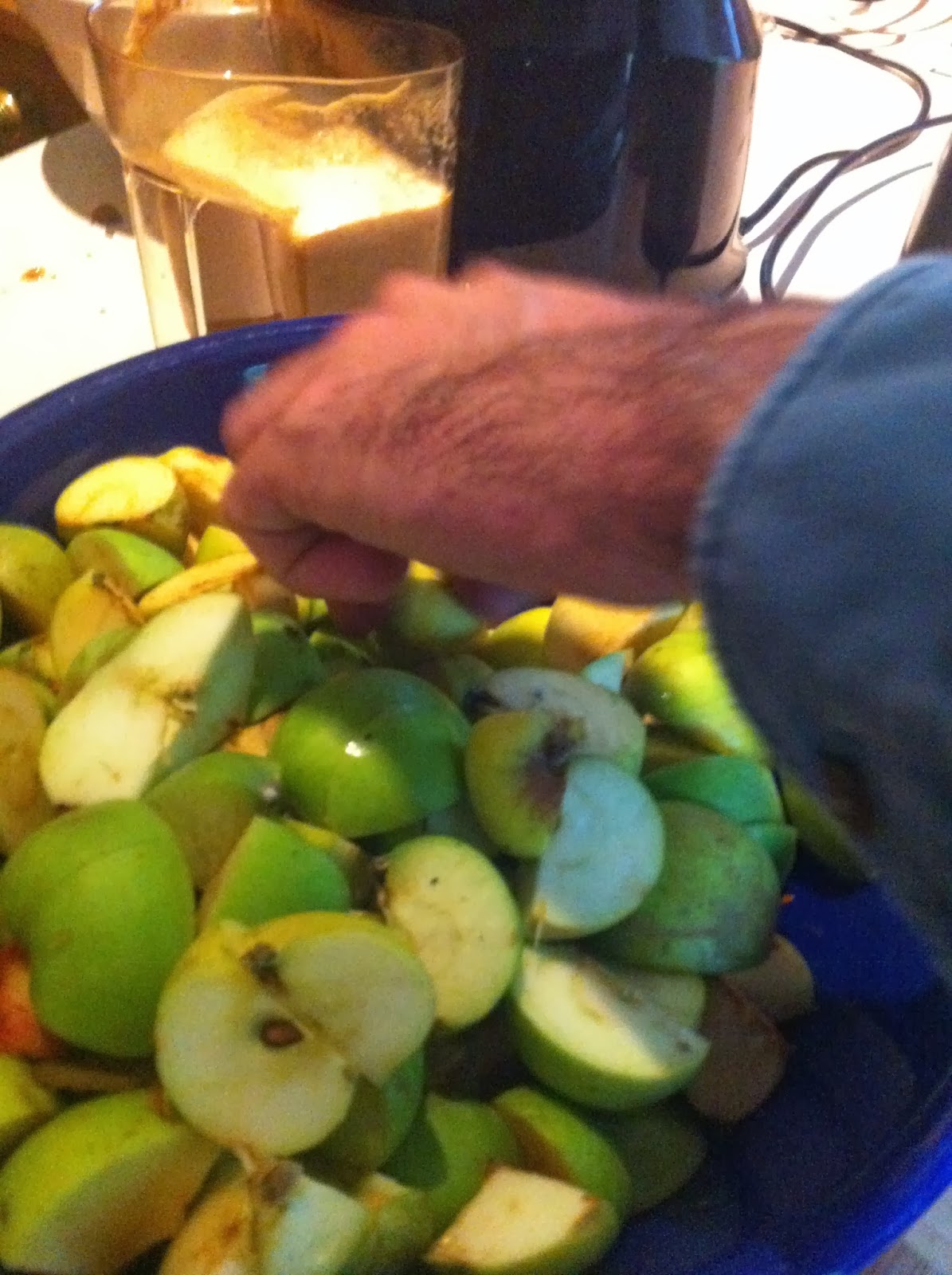

It’s not the same as crushing and pressing, but it is what’s on offer, so in the grand spirit of necessity being the mother of cider invention, off we go. We arrive at the house of juicers with two large and very strong reusable shopping bags full of apples. Two masticating juicers (these have slow rotating blades which emulate a chewing action to liberate maximum juice), chopping boards and knives are laid out at the ready, and our task is all the swifter for it.

Much chopping and juicing ensues. We stop to allow both juicers to cool down a couple of times from our mammoth effort, and within 2 hours (tea break not included) we’ve cut off the very bad bits, and chopped and juiced 33 kilos of windfalls. Our haul produces around 15 litres of juice which we pour into a fermenter pail for a first fermentation.
About 5cm of solid foam forms on top which we scoop off. Because we make beer at home we also have a hydrometer, we take a reading and it comes in around 1.044, which is a little lower than the recommended density, so if it works this cider probably will be relatively sweet. We test the juice at this stage, which is sharp, acidic and very very appley.
 |
| yes, it's quite hard to get a reading |
There are plenty of apples to ripen still, come down to the community gardens on a Friday morning at 10am if you'd like to arrange to take some apples and try a cider making experiment yourself :-)



People are so into apple cider these days - I bet everyone loves it even if it is a bit on the sweet side ;)
ReplyDeletethis one was not that sweet first go around, so we got some more (sweeter) apples ... awaiting result. Worst that happens is we get very nice apple cider vinegar :-)
ReplyDelete